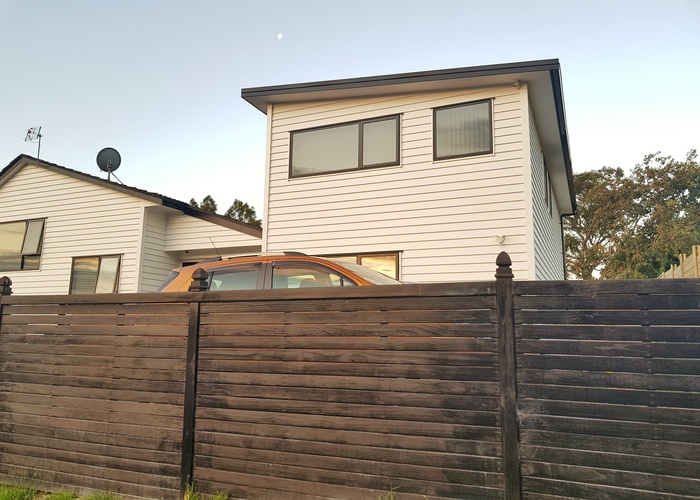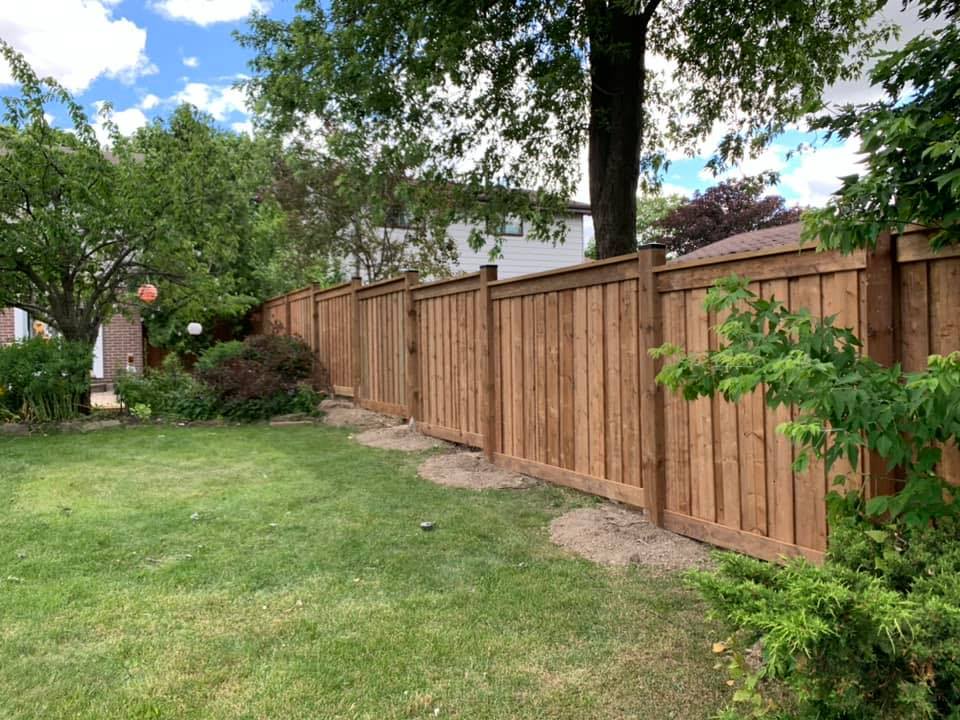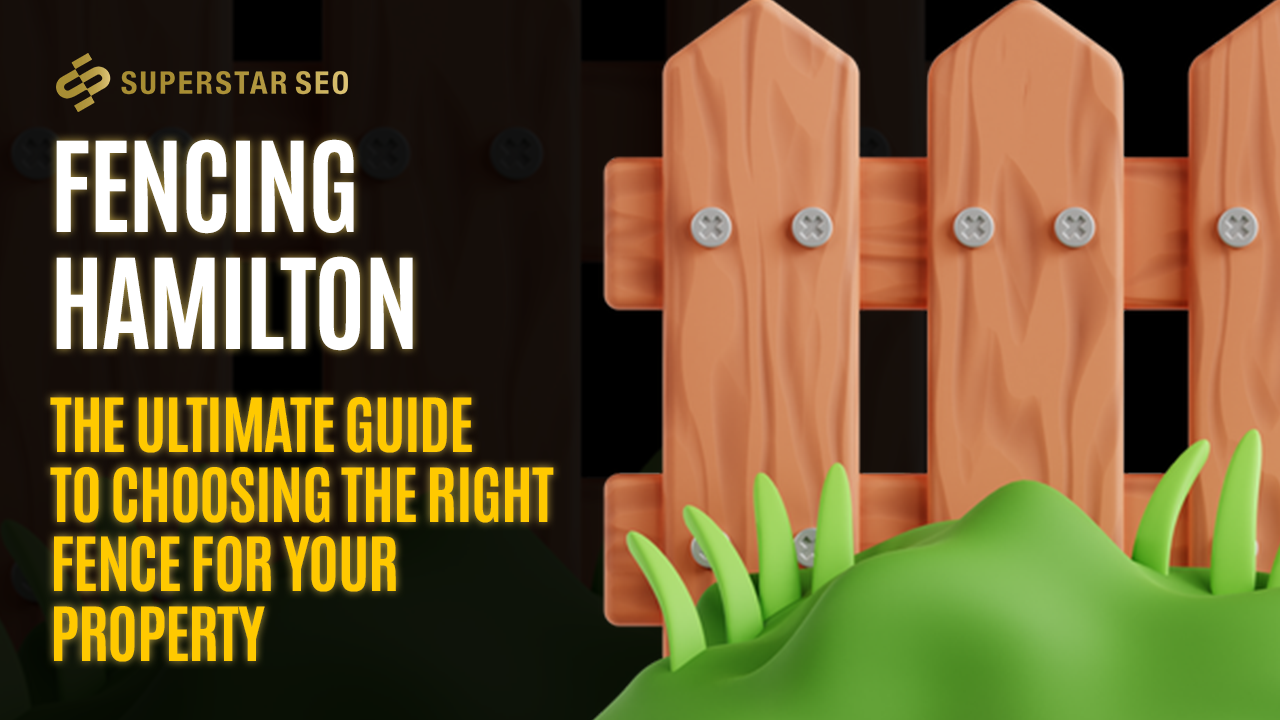Fencing Hamilton: The Ultimate Guide to Choosing the Right Fence for Your Property
Selecting the ideal fence is essential for improving your property's security, privacy, and general aesthetics. With so many options on the market, it's critical to take into account a number of important factors to make sure you choose the one that best suits your needs. Fencing Hamilton offers a wide variety of services both for residential and commercial properties!
Selecting the right fence involves a thoughtful analysis of your property's unique requirements. The decision-making process should take into account factors such as purpose, materials, regulations, and climate.
One of the primary considerations when choosing a fence is understanding its purpose. Are you installing it for security, privacy, or purely aesthetic reasons? Different fence types serve different purposes, so identifying your specific needs will guide you in the right direction.
Fencing materials play a crucial role in the fence's durability, maintenance, and overall appearance. Common materials include wood, vinyl, metal, and composite. Each material has its own set of advantages and disadvantages, so it's vital to weigh factors such as cost, maintenance requirements, and lifespan.
Before installing a fence, it's important to be aware of any local regulations or guidelines governing fence height, design, and placement. Failure to comply with these regulations may result in costly fines or the need to remove and reinstall the fence.
The climate of your area can significantly impact the longevity and maintenance of your fence. For instance, certain materials may be more susceptible to damage in extreme weather conditions. Understanding the climate factors in your region will help you choose a fence that can withstand the elements.
What are the Different Materials Available for Fencing, and How Do You Choose the Best One?
Wooden Fences
Wood remains a classic and popular choice for fencing. It offers a timeless aesthetic and can be customized to suit various styles. Cedar and redwood are known for their natural resistance to insects and decay, making them durable choices. However, wood requires regular maintenance, such as staining or painting, to preserve its appearance and prevent rot.
Vinyl Fences
Vinyl has gained popularity for its durability and low maintenance. It is resistant to rot, fading, and insects, making it an excellent choice for those looking for a long-lasting and aesthetically pleasing fence. Vinyl fencing is available in various styles and colors, providing flexibility in design.
Metal Fences
Metal fences, such as wrought iron or aluminum, are valued for their strength and security. Wrought iron adds a touch of elegance but may require more maintenance to prevent rust. Aluminum, on the other hand, is rust-resistant and requires minimal upkeep. Metal fences are durable and can be an ideal choice for both residential and commercial properties.
Composite Fences
Composite materials, a blend of wood fibers and plastic, offer a compromise between the natural look of wood and the durability of synthetic materials. Composite fences are resistant to insects, rot, and the effects of weather. They require minimal maintenance and are an eco-friendly alternative.
Chain Link Fences
Chain link fences are a practical and cost-effective option for securing properties. While they may lack the visual appeal of other materials, they are durable, easy to install, and require minimal maintenance. They are often chosen for their functionality in providing security without obstructing views.

How Does the Climate of Your Area Impact the Choice of the Right Fence?
Different climates pose unique challenges to fences and Fencing Hamilton tasks this into consideration before installation. For instance, areas with high humidity may lead to faster deterioration of certain materials, while regions with extreme temperature variations may require fences that can withstand expansion and contraction.
In humid climates, wooden fences are particularly susceptible to rot and mold. Choosing a wood species with natural resistance to moisture or applying protective sealants can help mitigate these issues. Regular maintenance, such as staining or painting, is also crucial to extending the life of a wooden fence.
In coastal areas where salt air is prevalent, metal fences are popular but can be prone to rust. Opting for materials like aluminum or galvanized steel that have inherent rust resistance can be a smart choice. Regular cleaning and applying anti-corrosion coatings can further protect metal fences in such environments.
In regions with intense sunlight, vinyl fences are an excellent option. Vinyl is resistant to fading and does not warp or crack under prolonged sun exposure. This makes it a low-maintenance choice for areas with harsh sunlight, requiring minimal upkeep to retain its appearance.
Composite materials, combining wood and plastic, offer a versatile solution for varied climates. These materials are designed to resist moisture, insects, and the effects of UV rays. Composite fences are known for their durability and can be an excellent choice for areas with diverse weather conditions.
Are There Specific Regulations or Guidelines to Follow When Installing a Fence on Your Property?
The installation of a fence on your property involves more than just choosing the right design and material. It's essential to be aware of any local regulations or guidelines that may govern the installation process. Failure to comply with these rules can result in legal consequences and the need for costly adjustments.
Before installing a fence, it's crucial to check your local zoning regulations. These regulations dictate aspects such as fence height, placement, and even the materials allowed. Some areas may have restrictions on front-yard fencing or may require special permits for certain types of fences. Understanding these rules ensures that your fence project complies with local guidelines.
If you live in a community with a homeowners association, there may be additional rules to consider. HOAs often have strict guidelines regarding fence styles, colors, and even maintenance standards. It's essential to review your community's HOA guidelines to avoid potential conflicts and ensure your fence meets the established standards.
Determining your property's boundaries precisely is essential before building a fence. This may involve obtaining a property survey to ensure that the fence is placed entirely within your property lines. Installing a fence beyond your property boundaries can lead to disputes with neighbors and legal issues.
It's important to be aware of any underground utility lines or easements on your property. Installing a fence over utility lines can lead to costly repairs and disruptions. Checking with local utility companies and understanding the location of easements will help you avoid potential complications during the installation process.
While not a legal requirement, it's often a good practice to communicate with your neighbors about your intention to install a fence. Discussing your plans can help address any concerns they may have and promote a positive neighborhood relationship.
What Role Does the Intended Purpose of the Fence Play in the Decision-Making Process?
For those prioritizing security and privacy, the choice of a fence will likely involve taller designs with minimal gaps. Solid materials such as wood or vinyl can create a barrier that restricts visibility and access. Consideration should also be given to features like locking gates and sturdy construction to enhance security measures.
If the primary goal is to enhance the visual appeal of your property, aesthetic considerations take center stage. Fences designed for aesthetic purposes may include ornamental ironwork, decorative patterns, or landscaping elements. Choosing a fence that complements the architectural style of your home can significantly contribute to curb appeal.
For pet owners, the fence serves as a means of containment and protection. The fence's height and design should be chosen based on the size and behavior of the pets. Fencing materials that prevent pets from digging underneath or climbing over should be prioritized for effective containment.
In some cases, the primary purpose of a fence is to clearly mark property boundaries. This is common in suburban areas where properties are closely situated. Boundary-marking fences can be shorter in height and may focus more on visual demarcation than on providing security or privacy.
For homeowners with pools, safety is paramount. Pool fences should comply with local safety regulations and typically involve designs that prevent unauthorized access. Self-closing and self-latching gates, along with a height that meets safety standards, are essential features for pool safety fences.
How Can You Balance Aesthetics and Functionality When Selecting a Fence Design?
A well-designed fence enhances the overall aesthetic of your property. Consider the architectural style of your home and aim for a fence design that complements its features. Harmonizing the fence with the existing landscape and structures creates a cohesive and visually pleasing environment.
Selecting the right materials is crucial for achieving a balance between aesthetics and functionality. Wood offers a timeless and natural look, but it may require more maintenance. Vinyl provides a clean and modern appearance with minimal upkeep. Metal fences, such as wrought iron, add elegance and durability but may require more maintenance to prevent rust.
The color and finish of your fence contribute significantly to its overall aesthetic. Choose colors that complement the exterior of your home and the surrounding landscape. Some materials, like vinyl, offer a wide range of color options, allowing you to customize the fence to suit your preferences.
To enhance the aesthetic appeal, consider incorporating decorative elements into the fence design. Ornamental ironwork, lattice patterns, or post caps can add visual interest without compromising functionality. However, it's essential to strike a balance, ensuring that decorative elements do not hinder the practical aspects of the fence.
The height of the fence is a critical factor in both aesthetics and functionality. Taller fences provide more privacy and security but may impact the openness of the space. Consider the desired level of visibility and choose a height that aligns with your preferences while maintaining the overall aesthetic of the property.
Achieving the perfect balance between aesthetics and functionality often involves professional installation. Experienced installers can ensure that the fence is not only visually appealing but also structurally sound and meets all functional requirements.

Are There Any Maintenance Considerations for Different Types of Fences?
There are more factors to take into account when choosing a fence for your property than just looks and practicality. Taking maintenance into account is essential to guaranteeing your fence's longevity and functionality. The maintenance needs of various fence types vary, so it's important to know these things before choosing a fence.
Wooden fences offer a classic and natural look but often require more maintenance than other materials. Regular staining or painting is necessary to protect the wood from the elements, prevent rot, and maintain its appearance. Additionally, inspecting for signs of insect infestation and addressing issues promptly is key to preserving the integrity of a wooden fence.
Vinyl fences are prized for their durability and low maintenance. Unlike wood, vinyl does not require painting or staining. Routine cleaning with soap and water is usually sufficient to keep a vinyl fence looking pristine. Periodic checks for any damage, such as cracks or warping, can help address issues before they become more significant.
Metal fences, including wrought iron and aluminum, are generally durable but may require maintenance to prevent rust, especially in humid or coastal areas. Applying anti-corrosion coatings and regular inspections for signs of rust can help maintain the longevity and appearance of metal fences.
Composite materials offer a balance between the natural look of wood and the low maintenance of synthetic materials. Composite fences are resistant to rot, insects, and the effects of weather. While they may require occasional cleaning, they generally do not demand the same level of maintenance as traditional wood fences.
Chain link fences are known for their practicality and ease of installation. While they are low maintenance in terms of cleaning, inspecting for any damage to the chain links and ensuring that posts are secure is essential. Prompt repairs can prevent further issues and prolong the life of the fence.
Regardless of the fence type, regular inspections are crucial for identifying potential issues early on. Inspect the entire length of the fence, paying attention to any loose components, signs of wear, or damage. Prompt repairs can prevent small problems from turning into more extensive and costly issues.





